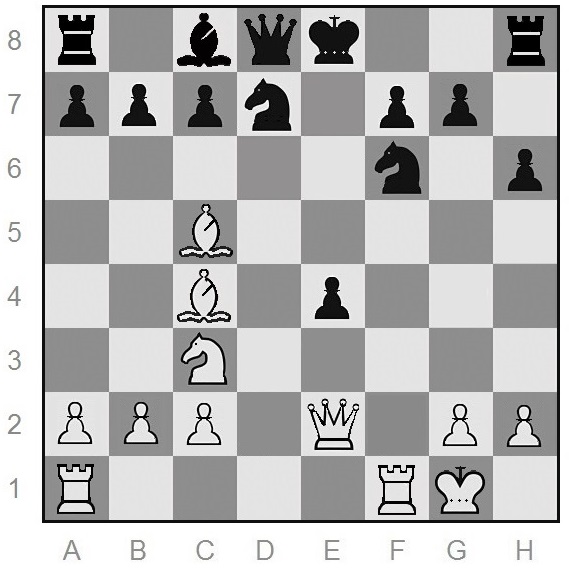Consider the chess puzzle below, a problem not for beginners but ideal for lower-rated tournament players:
.

White to move and win, as quickly as possible
.
Clear thinking may help solve this puzzle, but clear understanding of the influences of chess pieces can here make an apparently difficult problem easy to solve. Please do not look at the bottom of this post for the solution, even if you’ve tried to solve this but have failed. Consider the following.
Notice that the black king has no legal move. It’s even illegal to castle, if it were black’s turn, for the white bishop at c5 controls the f8 square. In fact, that bishop controls two empty squares near the black king, and this is a clue.
The other white bishop gives us another clue: The bishop at c4 points to the f7 square (a black pawn on that square, however, is irrelevant). If only white had another piece that was also attacking f7, checkmate would come easily with Bxf7#.
Now look at the white rook at f1. The white pawn is gone from that file, giving that rook almost a clear path to the f7 square. If only that black knight were not on f6. That’s another clue. Can white force that black knight to move?
We’ll get right back to that question. Now see what would happen if the white queen could capture the black pawn at e4. We don’t usually consider that kind of move, however, because the queen could immediately be captured. Who wants to lose a queen?
But notice that if that black pawn were not defended, how difficult it would be for black to get out of the resulting check. Moving the black queen to e7, to block that check, would allow white to use the white queen to capture the black queen, and that would be checkmate. But moving the knight at d7 to e5 loses that knight and white is still attacking the black king, with no letup, after the white queen would capture that knight at e5.
If only that black knight were not on f6, defending that black pawn. Wait a minute: deja vu . . . all over again. That knight is performing two functions: protecting that pawn and blocking checkmate. The most important job, of course, is preventing the black king from getting checkmated, so what should white do? The white queen captures the black pawn at e4, check.
Now notice that black cannot capture the white queen or immediate checkmate would come with the white bishop at c4 capturing the pawn at f7. Black may give up a knight, but white will keep capturing black pieces or will drive the black king towards the center, where it can easily be checkmated.
Clear Thinking and Education
Children need to be taught how to think, but how often they are trained what to think instead! Learning and practicing chess can help kids and grownups to think better, but that’s not the subject here. Basic reasoning skills can be learned but adults who cannot reason well cannot teach logical reasoning. We all need to communicate what skills we have and listen to each other, learning and teaching as best we can. And learning need not be confined to the classroom, with formal education.
###
.
It can help to watch others play chess, if you’re a raw beginner. You’ll still need to dive into a game yourself, at least once in awhile. Yet you can improve your chess abilities by watching others better than you can improve your tennis abilities by watching others.
In Western Pennsylvania, more than 70 schools and a dozen libraries offer chess programs, reaching several thousand students each year.
.


